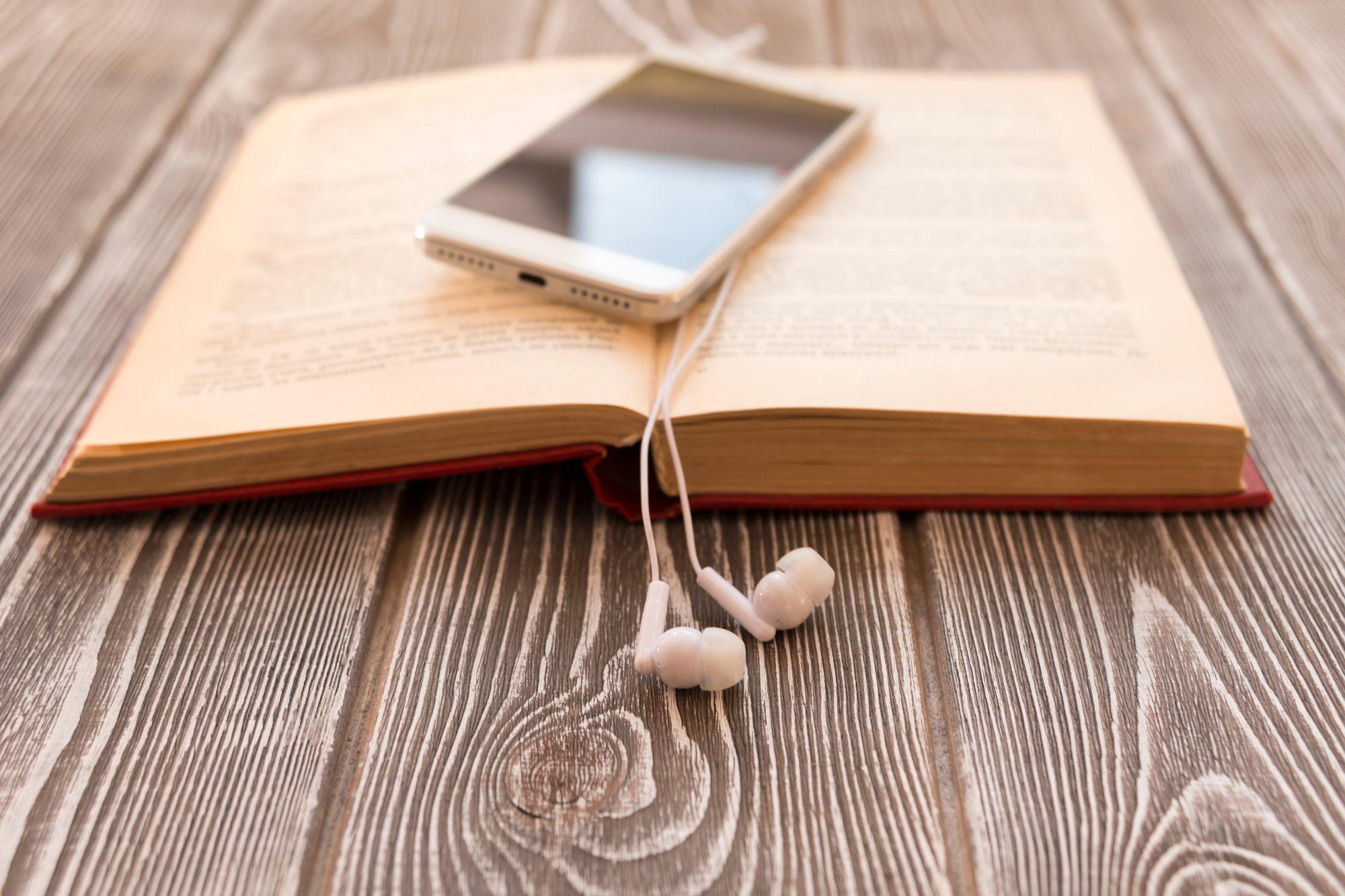In the 1400s we saw the printing press, with technophobe Johannes Trithemius saying monks who wrote books by hand will become lazy and will no longer have meaning in life.
In 1993, author Peter James published the first electronic novel on two floppy disks, with a journalist from The Times dragging his computer to the beach to make a bold statement against it.
And somewhere in between all that, the audiobook came along… To which the backlash was nonexistent.
It’s not really a huge difference when you think about. I mean, we had radio for most of the 20th century. Before the internet, you could listen to audiobooks on cassette tapes as you sit in traffic. You could listen to audiobooks on your Walkman as you sit on the bus, even though you had to lug around the CDs with you.
It’s really nothing special.
But now it’s trending, and with the ubiquity of the internet you can listen to audiobooks anywhere you please. Even in the middle of the Sahara Desert, provided you have enough charge on your smartphone. And you don’t have to lug around CDs. Which leads me to asking: what are the main points to consider when deciding between audiobook and paperback?
Oh, and if you like books with pictures, try an Ebook instead. This article is solely dedicated to voice and words.

Source: giphy.com
The Audiobook
Sometimes it’s great to listen to someone read a book, especially if you cannot read it yourself or you have vision impairment. Dr Rachel Morley, a communications lecturer at Western Sydney University, seems to think so.
“I also like the way audiobooks allow the listener to hear the story which can elicit a different way of reading and imagining,” Rachel said. “Sounding out a story, and hearing someone read it, can bring a story to life in new ways.”
If you’ve read anything by P.G. Wodehouse or Mark Twain, you can totally understand what Rachel means by this. I mean, consider the following quote from Harper Lee’s To Kill a Mockingbird:
“There’s some folks who don’t eat like us,” she whispered fiercely, “but you ain’t called on to contradict ’em at the table when they don’t. That boy’s yo’ comp’ny and if he wants to eat up the table cloth you let him, you hear?”
You don’t get the full rich Southern United States accent from reading this quote unless you know what it sounds like. But listening to someone read these quotes out with the proper dialect will bring meaning making to the forefront.
For contrast, let’s try a 1930s aristocratic English accent, from P.G. Wodehouse’s Young Men In Spats:
“Do you know,” said a thoughtful Bean, “I’ll bet that if all the girls Freddie Widgeon has loved were placed end to end—not that I suppose one could do it—they would reach half-way down Piccadilly.”
“Further than that,” said the Egg. “Some of them were pretty tall.”
Of course, when you read it with an Australian accent (or another non-aristocratic-English-accent) it sounds normal. But try reading it again with a thick aristocratic English accent. Can you? It’s great if you can, but if not, you may prefer hearing someone else say it. Someone experienced in conveying the accent well.
Another great thing about audiobooks is you can read them – well, listen to them – when you are doing other things. Unlike a physical book, you don’t really have to close it when you get off the train. You’re not distracted by your eyes. You can even do it while doing the housework. Although, personally, I believe this is only good for fictional books and autobiographies. For the more detailed and argumentative nonfiction books – think textbooks written by university professors – it may be wiser to read it off the page.
And now that I mentioned autobiographies, I have to say they are better when listened to. This is because almost every autobiography is read by the person who wrote it – the one whom the autobiography is about.
Oh, and lastly, if you use an audiobook store like Audible, you don’t have to cart around a store of books!

Source: giphy.com
The Paperback
We’re very used to this, considering it’s been in our history for well over half a millennium. It’s there ready and waiting, with no worries about charging it or program glitches.
“The paperback is portable and the materiality of the book invites a certain intimacy and sense of narrative immersion that I’ve yet to experience in other book technologies,” Dr Rachel Morley said. “Books are tactile and they have their own interactivity which I think is important to acknowledge.”
And that interactivity is important. Words on a page can be read at your own pace, at your own discretion, and at your own understanding. If you get to a part on the page where you go, ‘hang on a minute, what’s going on?’ you can easily restart at the beginning of the paragraph. Audiobooks are sectioned per chapter, and in order to go back to a previous point you need to scroll back or rewind. On Audible, at least, you can go back in 30 second increments with a push of a button.
“Science shows that reading on the page is good for the brain,” Rachel said. “It boosts cognition, it boosts memory, and its connected to healthy ageing, cutting out stress and wellbeing.”
There’s also the way of navigating. Going back to my previous personal thought about reading detailed and argumentative nonfiction books, especially scholarly textbooks, it seems more navigable to read the physical book. Perhaps you just want to know about the science behind the trickle-down effect in that economic textbook, and so you just want to read that particular chapter. Audiobooks, even on Audible, don’t name their chapters, they’re just chapter 1, chapter 2 and so forth. Until that changes, it would be more beneficial to read textbooks in a physical copy.

gif found at: https://metalandthegeek.files.wordpress.com/2015/08/study.gif


